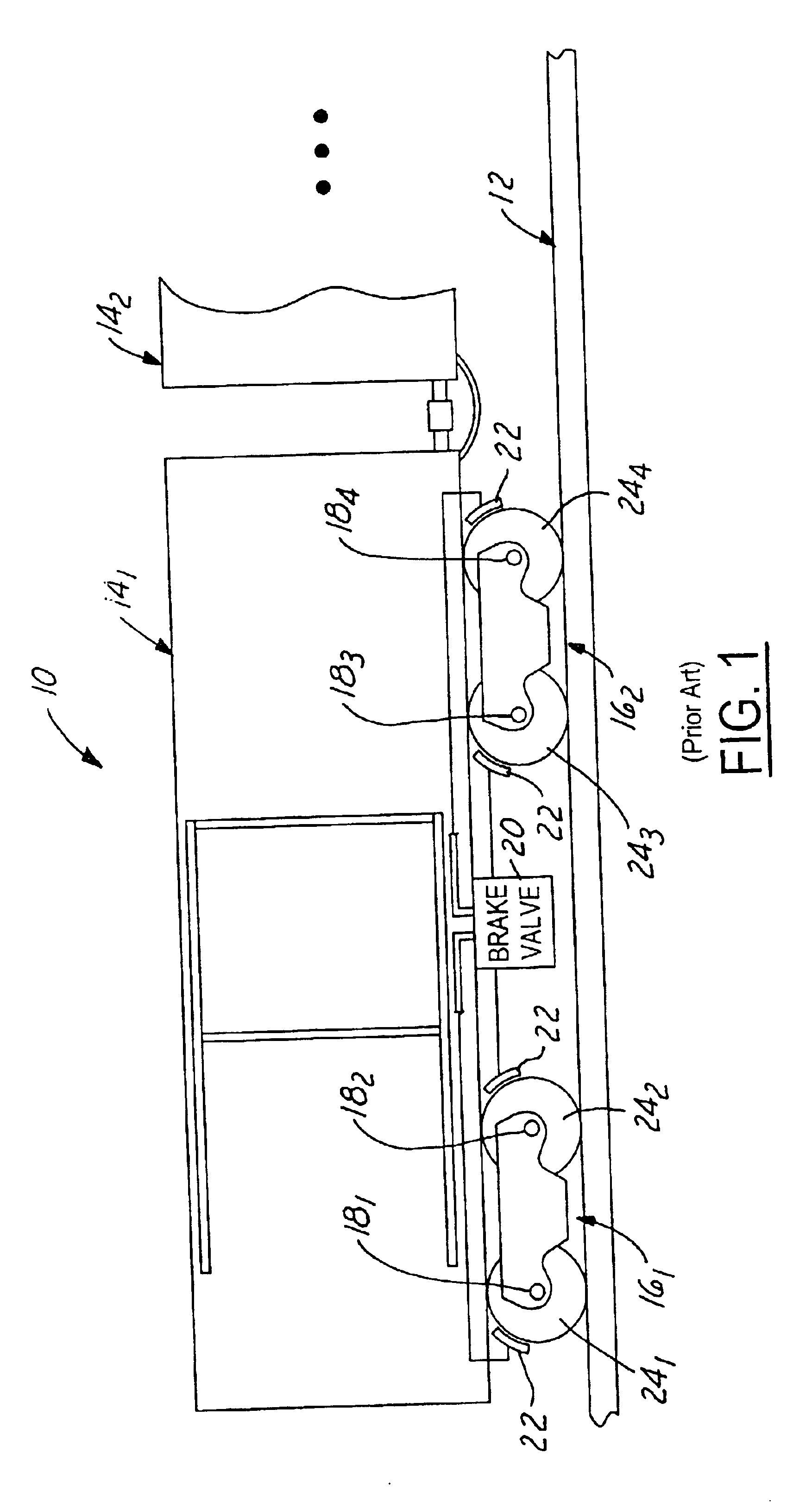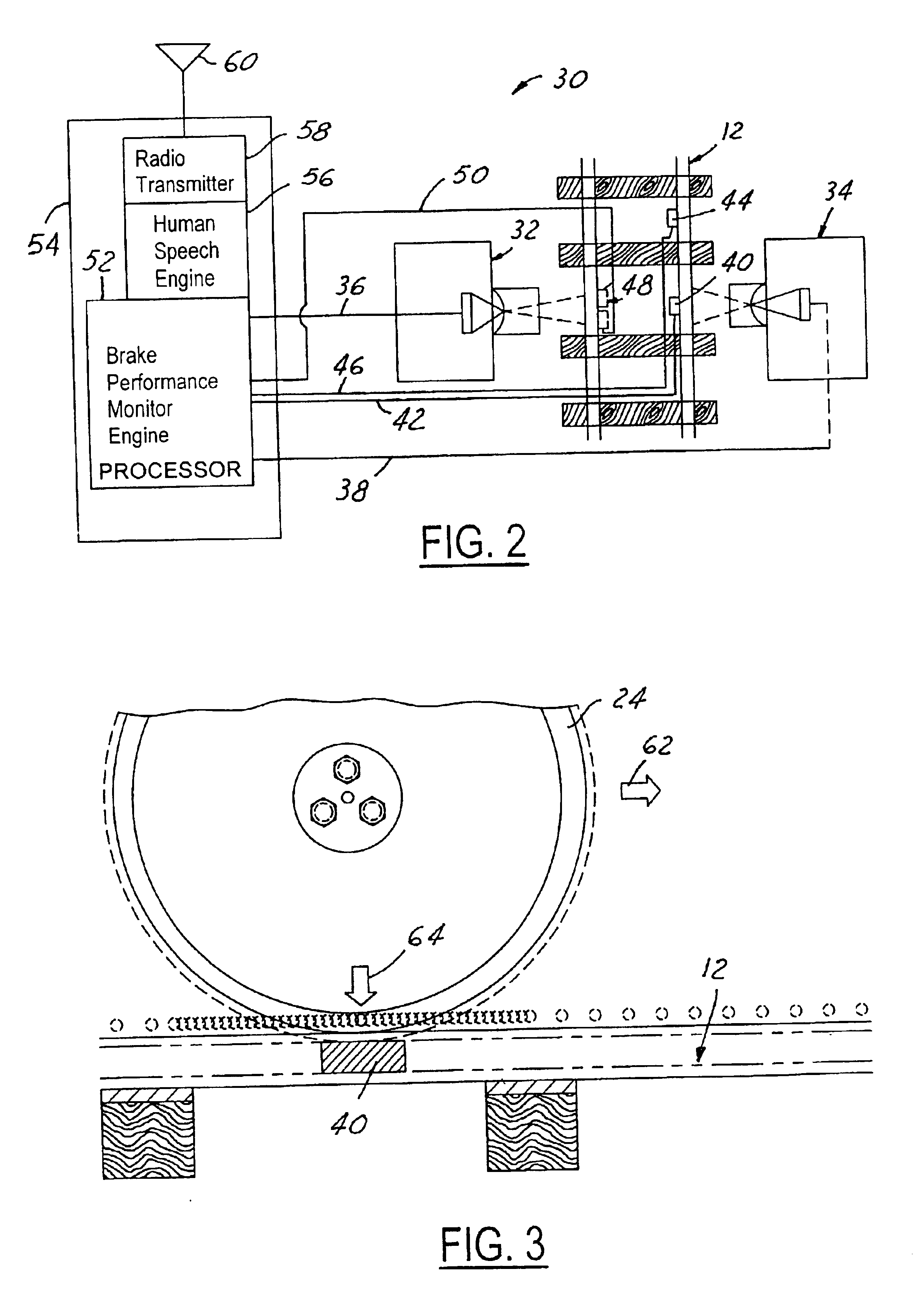Method and apparatus for monitoring wheel/brake performance
a technology of brakes and methods, applied in brake systems, process and machine control, instruments, etc., can solve problems such as affecting the efficiency of the train operation, affecting the operation efficiency of the train, and causing the wheels to become very ho
- Summary
- Abstract
- Description
- Claims
- Application Information
AI Technical Summary
Problems solved by technology
Method used
Image
Examples
Embodiment Construction
Assume a moderately loaded car 14 traveling at about 20 miles per hour down a 0.7% grade. Properly operating, braking wheels may, under such circumstances, be substantially above ambient temperature, for loaded cares for example, in the range of 500-600.degree. F. above ambient temperature. Empty or lightly loaded cars can have lower temperatures than loaded cars. However, a sliding wheel, may, on the other hand, be relatively close to ambient temperature. Assume that the wheels for the first axle in FIG. 4 have temperatures T.sub.1 =5.degree. F. (above ambient) and T.sub.2 =10.degree. F. (above ambient). Further assume that T.sub.3 =550.degree. F., T.sub.4 =550.degree. F., T.sub.5 =500.degree. F., T.sub.6 =600.degree. F., T.sub.7 =600.degree. F., and T.sub.8 =625.degree. F., all considered above ambient temperature. As to the first temperature parameter associated with the wheels of the axle being checked, in a preferred embodiment, the first temperature parameter would assume the ...
PUM
 Login to View More
Login to View More Abstract
Description
Claims
Application Information
 Login to View More
Login to View More - R&D
- Intellectual Property
- Life Sciences
- Materials
- Tech Scout
- Unparalleled Data Quality
- Higher Quality Content
- 60% Fewer Hallucinations
Browse by: Latest US Patents, China's latest patents, Technical Efficacy Thesaurus, Application Domain, Technology Topic, Popular Technical Reports.
© 2025 PatSnap. All rights reserved.Legal|Privacy policy|Modern Slavery Act Transparency Statement|Sitemap|About US| Contact US: help@patsnap.com



